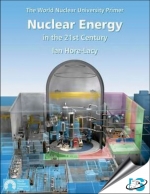Tab Article
This third edition of the World Nuclear University Primer on Nuclear Energy in the 21st Century is an authoritative resource for educators, students, policy-makers and interested lay-people alike. With balanced and accessible text, it provides:
- An introduction to nuclear science for the non-specialist.
- A valuable account of many aspects of nuclear technology, including industry applications.
- Answers to public concerns about nuclear power including safety, proliferation, and waste.
- Up-to-date data and references.
Since the first edition of this book in 1978 - as Nuclear Electricity - the intention has been to get behind the controversies and selective arguments, and present facts about energy demand and how it is met, in part, by nuclear power. Every form of energy production and conversion has an effect on the environment and carries risks. Nuclear energy has its challenges but these are frequently misunderstood and often misrepresented. Nuclear energy remains a safe, reliable, clean, and generally economic source of electricity with minimal impact on the environment. But many people do not see it that way.
The introduction to the first edition of this book in the 1970s expressed the opinion that if more effort were put into improving the safety and effectiveness of commercial nuclear power, and correspondingly less into ideological battles with those who wished it had never been invented, then the world would be much better off. With Chernobyl nearly a quarter of a century behind us and the great improvements to safety in those plants which most needed it, plus the welcome recycling of military uranium into making electricity, it seems that we are now closer to that state of affairs.
As John Ritch, President of the World Nuclear University, pointed out in opening the sixth annual WNU Summer Institute: "Between now and 2050, as world population swells from 6.8 billion toward 9 billion, humankind will consume more energy than the combined total used in all previous history. Under present patterns of energy use, the consequences will prove calamitous. The resulting pollution will damage or ruin the health of tens and likely hundreds of millions of citizens, mainly in the developing world. Far worse, the intensifying concentration of greenhouse gases will take us past a point of no return as we hurtle toward climate catastrophe. Today the world economy is producing greenhouse emissions at the rate of 30 billion tonnes per year - nearly 1,000 tonnes per second." This book provides some detail of an alternative.
The World Nuclear University is a global partnership of industry, inter-governmental, and academic institutions committed to enhancing education in nuclear science and technology. WNU partners include the International Atomic Energy Agency (IAEA), the World Association of Nuclear Operators (WANO), the Nuclear Energy Agency (NEA) of the OECD, and the World Nuclear Association (WNA).


